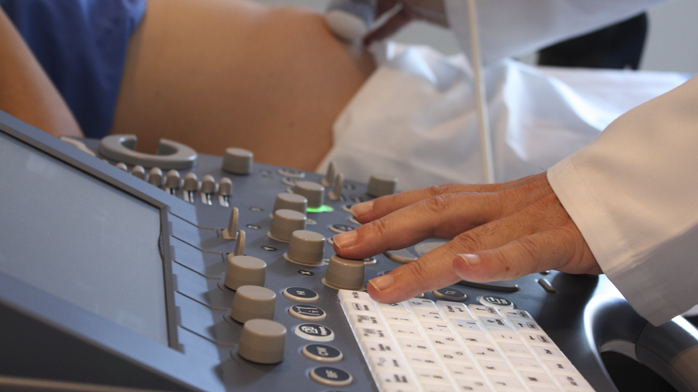Invasive prenatal diagnosis: chorionic villus sampling and amniocentesis
Avoid chromosomal and genetic disorders in your child before childbirth

How can we help you?
Non-obligation guidance
It is possible to obtain a highly reliable indication of if a foetus has a chromosomal or genetic abnormality by retrieving foetal matter using invasive techniques such as chorionic villus sampling or amniocentesis. These techniques can be used in order to avoid giving birth to a child with a malformation or serious illness.
What is invasive prenatal diagnosis?
Invasive prenatal diagnosis consists of retrieving foetal matter using an invasive method. There are two main techniques: amniocentesis and chorionic villus sampling.
Amniocentesis consists of obtaining a small quantity of the amniotic fluid surrounding the foetus by means of puncture through the mother's abdomen. Chorionic villus sampling consists of transervical removal of tissue from the placenta. Despite being invasive techniques, neither has an elevated complication rate.
What is invasive prenatal diagnosis used for? When is it used?
The aim of prenatal genetic diagnosis is to detect genetic or chromosomal abnormalities before childbirth. In other words, whilst the baby is still is a foetus. Amniocentesis is performed between weeks 15 and 18 of pregnancy and chorionic villus sampling has the advantage of being performed earlier on (between weeks 11 and 12 of pregnancy).
What does invasive prenatal diagnosis entail?
Once material from the foetus has been obtained, it is processed using different molecular biology and/or cytogenetics techniques depending on the type of abnormality that is due to be ruled out with the procedure. For diagnosis of genetic disorders, DNA is extracted from foetus cells and mutations in the gene that is responsible for the disease are analysed. Meanwhile, chromosomal abnormalities are normally diagnosed using the FISH (fluorescent in situ hybridisation) technique. With this technique, it is possible to analyse the chromosomes involved in the specific abnormality or the ones that are most commonly associated with numerical abnormalities in newborn children (trisomies 13, 18 and 21 or abnormalities in sex chromosomes) within a period of 24 hours. Cell culture is also performed in order to obtain the foetal karyotype. In this case, all the chromosomes can be observed so that abnormalities that could affect the foetus’ health can be ruled out.
If an ultrasound scan suggests that there is a malformation, a high-resolution ultrasound scan using the array CGH technique can be performed. This can detect gains or losses in small chromosomal regions.
When is prenatal invasive diagnosis advisable?
Prenatal invasive diagnosis is advised in cases where there is an increased risk of the foetus having a chromosomal abnormality such as Down's syndrome. For example, when there have been findings during ultrasound scans and/or biochemical tests (combined screening during the first high-risk term), when the mother is of an advanced age, abnormalities during previous pregnancies and a family history of malformations.
When one partner in a couple is a carrier of a chromosomal abnormality that could be passed on to offspring.
When one partner in a couple is a carrier of a genetic abnormality that has a 50% chance of being passed on to offspring (dominant inheritance).
When both partners in a couple are carriers of a genetic disorder with recessive inheritance (there is a 25% risk of children being affected).